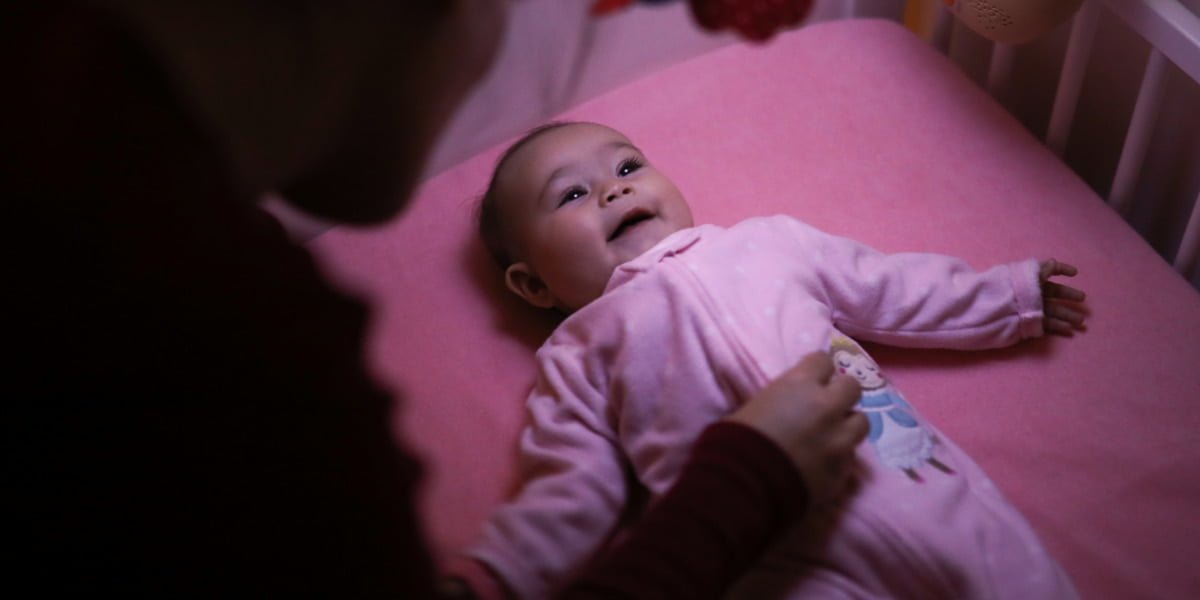Table of Contents
- Understanding Anxiety in Children: More Than Just Worry
- Parenting Strategies: Nurturing Calm and Building Coping Skills
- 1. Validate, Don’t Dismiss: The Power of Empathy
- 2. Externalize the Anxiety: Give it a Name
- 3. Teach Practical Coping Skills: Building an Anxiety Toolkit
- 4. Encourage Facing Fears Gradually: The Power of Exposure
- 5. Model Healthy Coping: Manage Your Own Anxiety
- 6. Maintain Consistent Routines and Expectations
- 7. Focus on Positive Reinforcement: Catch Them Being Brave
- When and How to Seek Professional Help
- Don’t Forget Yourself: Parent Self-Care is Crucial
- Conclusion: Nurturing Resilience, One Step at a Time
Parenting Children with Anxiety: Your Guide to Coping, Support, and Nurturing Resilience
Is your heart aching watching your child grapple with worries that seem too big for their little shoulders? Do bedtime battles fueled by unseen fears, tearful school drop-offs, or constant reassurance-seeking feel like your daily reality? You’re not alone. Parenting a child with anxiety can feel overwhelming, confusing, and isolating. It’s a journey filled with unique challenges, but also immense opportunities for connection, growth, and building incredible resilience in your child – and yourself.
Anxiety isn’t just shyness or occasional worry; it’s a persistent, often overpowering feeling that can significantly impact a child’s happiness, social life, and learning. But here’s the good news: anxiety is highly treatable, and as a parent, you are the most powerful force in your child’s corner. This article is your comprehensive guide, filled with understanding, practical coping strategies, and resources to help you navigate the complexities of childhood anxiety and support your child in finding their brave.

Understanding Anxiety in Children: More Than Just Worry
Before we dive into strategies, let’s understand what we’re dealing with. Anxiety is the body’s natural alarm system – the ‘fight-or-flight’ response. It’s helpful when facing real danger. However, for children with anxiety disorders, this alarm goes off too often, too intensely, and sometimes for no apparent reason. Their brains perceive threats where there might be none, triggering physical and emotional responses.
It’s crucial to distinguish between normal childhood fears and anxiety that interferes with daily life. While it’s typical for a toddler to have separation anxiety or a school-aged child to worry about a test, persistent, excessive worry that disrupts sleep, school, friendships, or family activities might signal an anxiety disorder.
Common Types of Anxiety Disorders in Children:
- Generalized Anxiety Disorder (GAD): Excessive worry about various things (school, health, family, future events) often accompanied by physical symptoms like restlessness, fatigue, and trouble concentrating.
- Separation Anxiety Disorder: Intense distress when separated from parents or caregivers, often involving worries about something bad happening to them or their loved ones during separation.
- Social Anxiety Disorder (Social Phobia): Overwhelming fear of social situations and scrutiny by others, leading to avoidance of peer interactions, presentations, or parties.
- Specific Phobias: Intense, irrational fear of specific objects or situations (e.g., dogs, spiders, heights, needles).
- Panic Disorder: Recurrent, unexpected panic attacks – sudden episodes of intense fear accompanied by physical symptoms like heart palpitations, shortness of breath, dizziness, and trembling.
- Selective Mutism: Consistent failure to speak in specific social situations (like school) despite speaking comfortably in others (like home).
Recognizing the Signs: What Does Child Anxiety Look Like?
Anxiety doesn’t always manifest as obvious worry. It can be sneaky and show up in various ways, often mimicking other issues. Keep an eye out for:
Emotional & Cognitive Signs:
- Excessive worrying or negative thoughts
- Irritability, crankiness, or anger outbursts
- Difficulty concentrating or mind going blank
- Perfectionism or fear of making mistakes
- Constant reassurance seeking (“Are you sure it will be okay?”)
- Feeling overwhelmed or easily flustered
- Imagining the worst-case scenario
- Difficulty relaxing or being restless
Physical Signs:
- Frequent stomach aches or headaches with no medical cause
- Muscle tension or aches
- Fatigue or trouble sleeping (difficulty falling asleep, staying asleep, nightmares)
- Shakiness or trembling
- Racing heart or shortness of breath
- Sweating
- Changes in appetite
- Nausea or digestive issues
Behavioral Signs:
- Avoidance of feared situations (school, social events, specific places)
- Clinginess or difficulty separating
- Crying spells
- Tantrums or meltdowns, especially when facing feared situations
- Difficulties at school (refusal, poor performance unrelated to ability)
- Repetitive behaviors or rituals (less common, but can occur)
If you notice several of these signs persisting and interfering with your child’s life, it’s time to explore coping strategies and potentially seek professional advice.

Parenting Strategies: Nurturing Calm and Building Coping Skills
Your role as a parent isn’t to eliminate anxiety entirely – that’s impossible and wouldn’t serve your child well in life. Instead, the goal is to help your child manage anxiety effectively so it doesn’t control their lives. This involves empathy, patience, and consistent practice of coping skills.
1. Validate, Don’t Dismiss: The Power of Empathy
One of the most important things you can do is validate your child’s feelings. Avoid saying things like, “Don’t worry about it,” “It’s not a big deal,” or “Just stop thinking about it.” While well-intentioned, these statements can make your child feel misunderstood or ashamed.
Instead, acknowledge their fear: “I see that you’re feeling really scared about going to school today,” or “It sounds like your tummy hurts because you’re worried about the sleepover.” Validation doesn’t mean agreeing that the threat is real; it means acknowledging that the *feeling* of fear is real for them.
Actionable Tip: Use reflective listening. Repeat back what you hear them saying in your own words: “So, you’re worried that if you go to the party, no one will talk to you. That sounds really tough.” This shows you’re truly listening and trying to understand their perspective.
2. Externalize the Anxiety: Give it a Name
Help your child understand that anxiety is something separate from them – it’s not who they are. Personifying anxiety can make it feel less overwhelming and more manageable. You could call it the “Worry Monster,” “Mr. Jitters,” or any name your child chooses.
Actionable Tip: Talk about the Worry Monster: “It looks like the Worry Monster is trying to trick you into thinking something bad will happen. What can we tell the Worry Monster?” This helps the child feel like they have some control over it and can challenge its unhelpful thoughts.
3. Teach Practical Coping Skills: Building an Anxiety Toolkit
Equip your child with concrete tools they can use when anxiety strikes. Practice these skills regularly when your child is calm, so they become second nature during stressful moments.
- Deep Breathing (Belly Breathing): Teach them to breathe in slowly through their nose, filling their belly with air like a balloon, and then breathe out slowly through their mouth, letting the balloon deflate. Try “square breathing” (inhale for 4, hold for 4, exhale for 4, hold for 4) or “hot chocolate breathing” (pretend to breathe in the smell of hot chocolate, then blow gently to cool it down).
- Grounding Techniques (5-4-3-2-1): When anxiety hits, guide them to notice: 5 things they can see, 4 things they can touch, 3 things they can hear, 2 things they can smell, and 1 thing they can taste. This pulls their focus away from anxious thoughts and into the present moment.
- Progressive Muscle Relaxation: Teach them to tense and then release different muscle groups (feet, legs, stomach, arms, face) to understand the difference between tension and relaxation.
- Positive Self-Talk & Coping Statements: Help them develop short, encouraging phrases they can repeat to themselves, like “I am brave,” “I can handle this,” “This feeling will pass,” or “I’ve done hard things before.”
- Mindfulness & Sensory Activities: Engaging the senses can be calming. Use playdough, listen to calming music, use a stress ball, look at a glitter jar, or simply focus on the sensation of their feet on the ground.
- Creating a Calm-Down Corner: Designate a safe, cozy space in your home with comforting items (blankets, pillows, books, calming toys) where your child can go to regulate their emotions.
4. Encourage Facing Fears Gradually: The Power of Exposure
While validating feelings is crucial, avoiding feared situations altogether reinforces anxiety. The goal is to gently encourage your child to face their fears in small, manageable steps. This is the core principle behind Exposure Therapy, a key component of Cognitive Behavioral Therapy (CBT).
Actionable Tip: Create a ‘Bravery Ladder’ or ‘Fear Ladder’.
- Identify the feared situation (e.g., sleeping alone).
- Break it down into smaller steps, from least scary to most scary (e.g., parent sits on bed until child is drowsy -> parent sits in chair in room -> parent sits outside door with door open -> parent sits outside door with door closed -> child sleeps alone).
- Have the child rate the anxiety level for each step (e.g., on a scale of 1-10).
- Start with the easiest step. Encourage your child to practice it repeatedly, using coping skills, until their anxiety decreases.
- Offer praise and small rewards for effort and bravery (not just success).
- Move up the ladder slowly, only progressing when the child feels reasonably comfortable with the current step.
This process teaches children that they *can* tolerate anxious feelings and that the feared outcomes usually don’t happen.
5. Model Healthy Coping: Manage Your Own Anxiety
Children are incredibly perceptive. They learn how to handle stress and worry by watching you. If you react to situations with panic or excessive worry, they are more likely to do the same. This doesn’t mean you have to be perfect, but it does mean being mindful of how you manage your own stress and anxiety.
Actionable Tip: Talk aloud about how you handle your own worries (in an age-appropriate way). “Wow, I’m feeling a bit nervous about that work presentation. I’m going to take a few deep breaths and remind myself I’m prepared.” Let them see you using coping strategies.

6. Maintain Consistent Routines and Expectations
Predictability can be very calming for anxious children. Knowing what to expect during the day reduces uncertainty, which often fuels anxiety. Stick to regular schedules for meals, homework, playtime, and especially bedtime.
While providing comfort, try not to eliminate all expectations. Holding age-appropriate expectations (like attending school, completing chores) shows your child you believe in their ability to function even with anxiety.
7. Focus on Positive Reinforcement: Catch Them Being Brave
Acknowledge and praise effort, not just perfection. When your child attempts something that makes them anxious, even if they don’t fully succeed, praise their courage. “I know that was really hard for you to walk into the classroom today. I’m so proud of you for trying!” Positive reinforcement encourages them to keep trying.
When and How to Seek Professional Help
While these parenting strategies are powerful, sometimes professional support is necessary and incredibly beneficial. Consider seeking help from a mental health professional (like a child psychologist, psychiatrist, licensed clinical social worker, or counselor) if:
- Anxiety is significantly interfering with school, friendships, family life, or activities your child used to enjoy.
- Symptoms are persistent, severe, or worsening despite your efforts.
- Your child is experiencing frequent or intense panic attacks.
- Anxiety is causing significant distress for the child or the family.
- You feel overwhelmed and unsure how to help.
Finding the Right Help:
- Pediatrician: Start by talking to your child’s doctor. They can rule out any underlying medical conditions and provide referrals to mental health specialists.
- School Counselor/Psychologist: Schools often have resources and can provide support or recommendations.
- Therapy (e.g., CBT): Cognitive Behavioral Therapy (CBT) is considered the gold standard treatment for childhood anxiety. It helps children understand the connection between thoughts, feelings, and behaviors, and teaches them practical skills to challenge anxious thoughts and face fears (exposure therapy). Parent involvement is often a key part of successful therapy.
- Medication: In some moderate to severe cases, medication might be considered, usually in conjunction with therapy. This decision should be made carefully with a qualified child psychiatrist or pediatrician experienced in pediatric psychopharmacology.
Remember, seeking professional help is a sign of strength and proactive parenting. It provides your child with specialized tools and gives you additional support and guidance.
Don’t Forget Yourself: Parent Self-Care is Crucial
Parenting a child with anxiety can be emotionally and physically draining. It’s easy to focus all your energy on your child’s needs and neglect your own. But you can’t pour from an empty cup. Taking care of yourself is not selfish; it’s essential for having the patience, energy, and resilience needed to support your child effectively.
- Seek Support: Connect with other parents facing similar challenges (support groups, online forums). Talk to trusted friends, family, or a therapist for your own support.
- Practice Self-Compassion: Be kind to yourself. Acknowledge that this is hard work. You won’t always get it right, and that’s okay.
- Schedule Breaks: Even short breaks can make a difference. Engage in activities you enjoy that help you relax and recharge.
- Maintain Healthy Habits: Prioritize sleep, nutrition, and exercise. These basics significantly impact your own stress levels and coping abilities.
- Educate Yourself: Learning more about child anxiety can empower you and reduce feelings of helplessness.

Conclusion: Nurturing Resilience, One Step at a Time
Parenting a child with anxiety is undoubtedly a challenging path, demanding extra patience, understanding, and effort. But it’s also a path filled with opportunities to deepen your connection with your child and empower them with invaluable life skills.
Remember the key pillars: validate their feelings, teach them practical coping mechanisms, encourage gradual exposure to fears, model healthy coping yourself, and maintain predictable routines. Don’t hesitate to seek professional help when needed – it’s a powerful resource for both your child and your family. And critically, prioritize your own well-being and self-care.
By providing consistent support, empathy, and the right tools, you can help your child learn to manage their anxiety, build confidence, and navigate the world with increasing courage and resilience. You are their anchor in the storm, and together, you can weather it and find calmer seas ahead.










